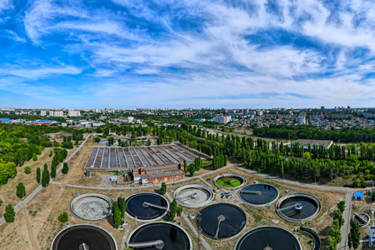How To Mitigate The Environmental Impact Of Wastewater
By Kingsley Amakiri

What Is Wastewater?
Wastewater refers to any liquid waste or sewage from homes, hospitals, factories, and any other building that uses water in its facilities. From flushing the toilet to the vast amount of wastewater that flows out of industrial plants, we all contribute to it. Unless sewage is adequately treated, it can harm public health and the environment.
How Harmful Is Wastewater To The Environment?
Untreated wastewater can have a severely detrimental impact on the environment. We are making water unusable means we are draining our water supplies. That waste is then dumped into our existing bodies of water, contaminating it with harmful substances such as heavy metals, pathogens, toxic chemicals, oil and grease, sludge, and organic and inorganic materials. This process presents numerous hazards for humans, as well as vast amounts of wildlife, including hundreds of species of fish that live in water. These harmful substances can also find their way into the soil, causing it to yield fewer crops at a slower rate.
So, what are our options?
Not To Waste, Not To Desire
Nature has an incredible ability to cope with small amounts of water waste and pollution. But it would be overwhelmed if we didn’t treat the billions of gallons of wastewater and sewage produced every day before releasing it back into the environment. Today, wastewater treatment plants are large complex facilities that use multiple technologies to remove up to 99% of all pollutants in wastewater.
Wastewater treatment is a process used to remove contaminants from the water before the remaining water, called effluent, is discharged back into the water cycle. Once returned to the water cycle, the effluent creates an acceptable environmental impact — or can be reused for various purposes.
4 Phases Of Wastewater Treatment
Primary treatment:
This is the preliminary stage in the water treatment process. Wastewater is collected in holding tanks, where solids sink to the bottom and are collected. The top layer of fats and oils is then scraped off, and the remaining liquid is sent for further treatment. Wastewater is placed in holding tanks, and solids settle to the bottom where they are collected. The top layer of fats and oils is then scraped off, and the remaining liquid is sent for further treatment. Meanwhile, leftover sludge (when treated separately) can be used for other commercial purposes. Dissolved Air Flotation (DAF) is one primary treatment used to concentrate and remove a wide range of suspended solids in wastewater. This process can remove up to 60% of suspended solids and organic loads.
Secondary treatment:
This phase makes use of oxidation to purify wastewater further. Coagulants and flocculant chemicals are used for further solids removal, water clarification, lime softening, sludge thickening, and solids dewatering. This process can result in the reduction of more than 90% of suspended solids and organic loads.
Tertiary water treatment:
This phase is used to improve the quality of the effluent resulting from primary and secondary treatment processes.
After the tertiary treatment, water can be safely discharged into the environment; It can also be used for agricultural, industrial and, in some cases, domestic purposes:
- Sand filtration can be used to remove particulate matter.
- Enhanced biological phosphorus removal can be deployed.
- Nitrogen can be removed by using nitrifying bacteria.
- Lagooning can be used to remove nutrients and waste from sewage for safer disposal or reuse.
Disinfection:
This is the final stage, removing microbes and odors from the wastewater. It can include using ozone, ultraviolet (UV) light, or chlorine dioxide. The latter is particularly effective at removing microorganisms such as bacteria, viruses, and parasites. Once the water has been disinfected, it can be used in various industrial and agricultural applications. There are, however, strict environmental regulations around the safe disposal and reuse of water and sludge, which you can read about here. And don’t forget, regular testing is essential for ensuring that the water you’re reusing is safe and within the appropriate limits for preventing microbiological growth.
Water Recycling And Reuse
With the rising climate crisis and growing spotlight on companies to embed more eco-friendly practices, many companies recognise that there is an opportunity to manage their water in a highly sustainable way. Technology can be used that enables wastewater to be reused, while bespoke machines, equipment, and processes also exist to help companies transform wastewater into energy. Being able to efficiently recycle wastewater and reduce the amount of sludge produced by current methods is not only about protecting the environment and adding to your green credentials. With waste supply and disposal prices increasing, lowering your necessary intake of freshwater and the cost of sludge disposal may save you a substantial amount of money.
Kingsley Amakiri is a trained Chemical Engineer with a PhD in Chemical Engineering at the University of Huddersfield. He serves as a consultant for Wateren Service Limited. Kingsley successfully collaborates with other universities and industries, offering sustainable Water treatment solutions. He has gained several awards, including the IEE future star of nanotechnology award in 2020. He also uses innovative teaching approaches to deliver modules aligned with his research interests to students in various degree courses. Kingsley is a Member of the Institution of Chemical Engineers and the Royal Society of Chemistry.
